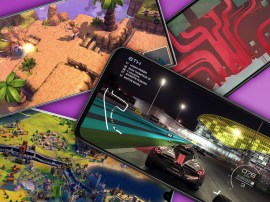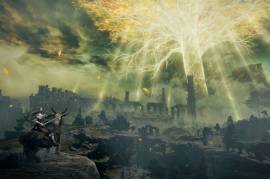Doom review
Welcome (back) to hell - Nintendo fans now included
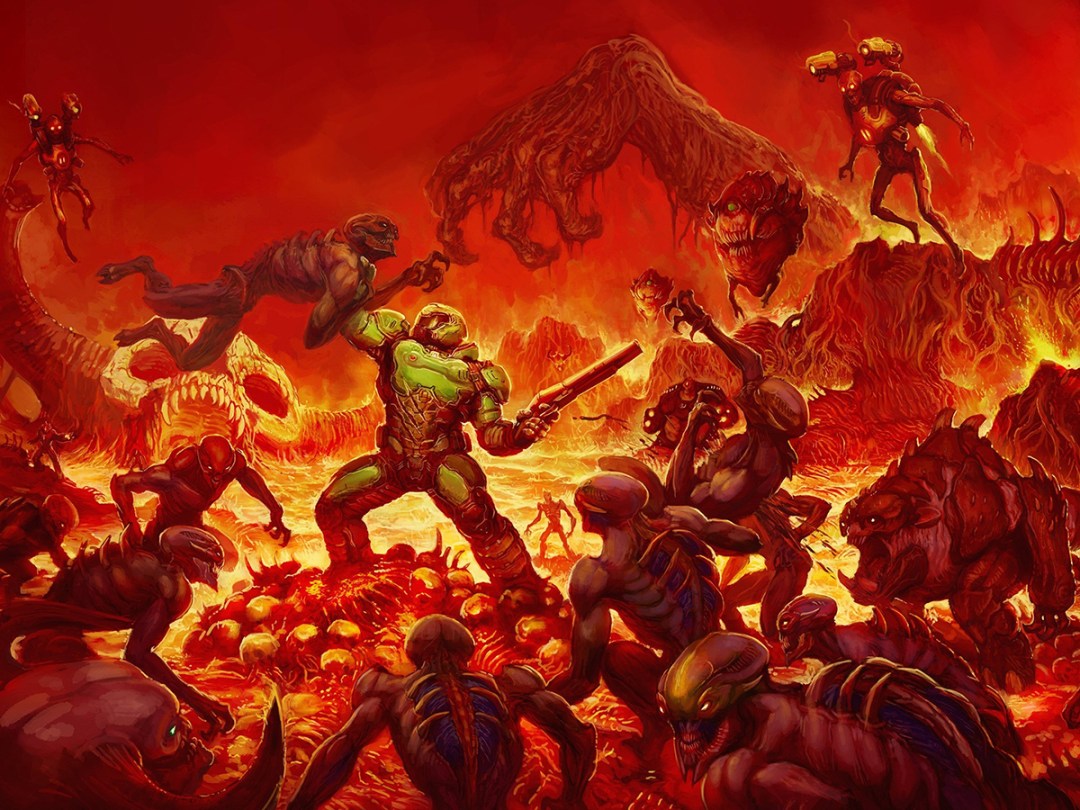
Doom is back – but not quite as you knew it.
First released on the PC way back in 1993, id Software’s Doom was a true groundbreaker. While it wasn’t the first first-person shooter ever made, it did popularise the genre – so much so that for several years afterwards, FPS games were commonly known as “Doom clones”.
And now Doom is back for the fourth title in the series, once again developed by id – but rather than another sequel, this Doom is a reimagining of the first game. And while I confess that I expected it to be something of a sub-par exercise in nostalgia, I’m happy to say it succeeds in capturing the spirit of 1993 while offering the graphics and refinements you’d expect from a 2016 release.
From the very beginning of Doom‘s single-player campaign, it feels like id was determined to exorcise the demons (no pun intended) brought on by the disappointing Doom 3. That game looked incredible for 2004 but favoured a slow-paced, almost survival horror-like approach over frenetic action.
This new Doom, however, wastes no time attempting to build up a creepy atmosphere; here, you’re firing a gun at shambling possessed enemies within seconds of starting.
And things don’t really let up from there – this game is about fast, brutal and relentless action. Movement is slick and swift, and your unnamed protagonist feels like he’s riding in a greased-up shopping trolley.
You don’t need to reload weapons, merely keep an eye on your ammo count, and fall damage doesn’t exist (unless you essentially fall off the map entirely).
FIRST IMP-RESSIONS
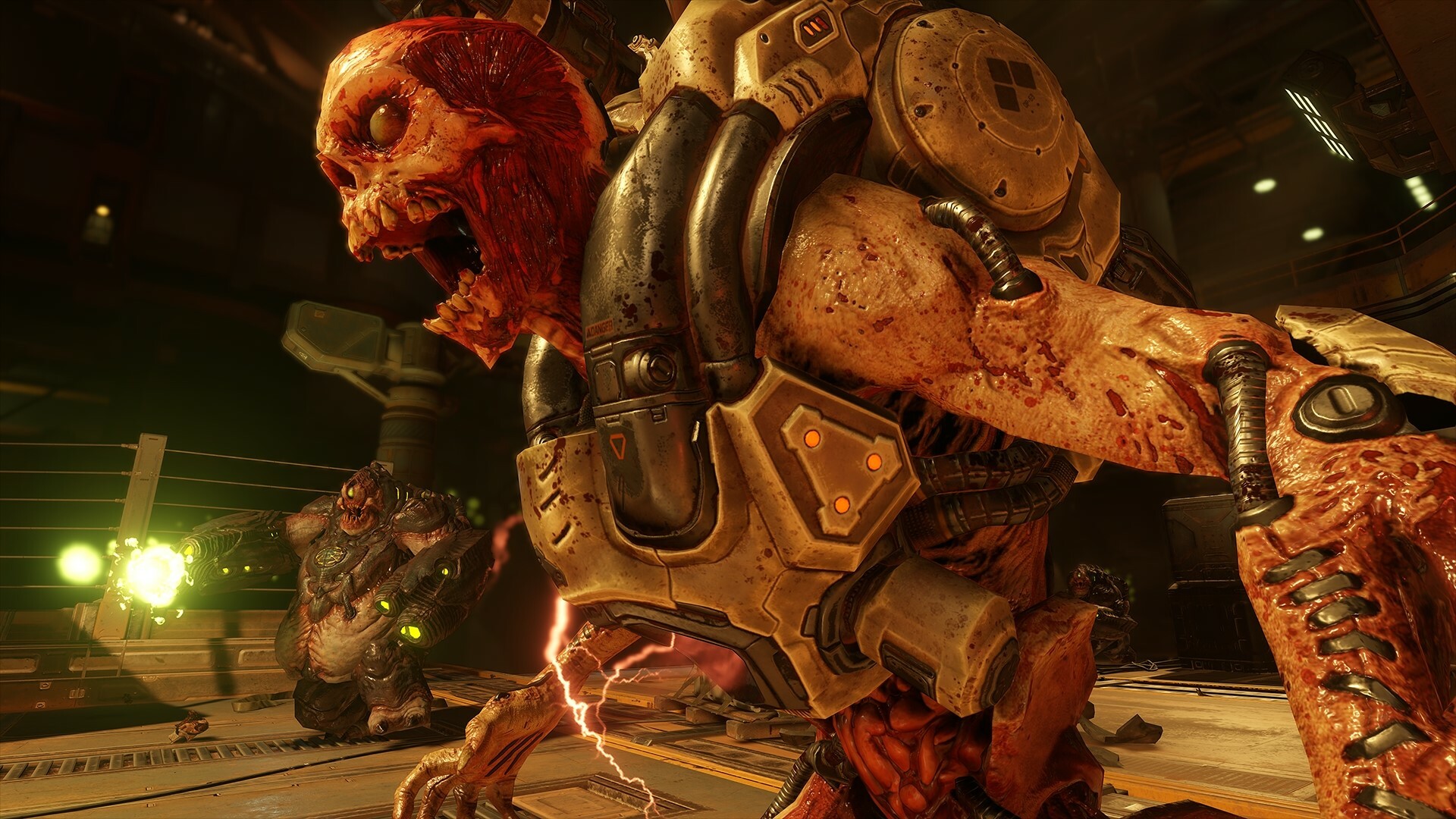
The pace is aided by the level design, with id eschewing tight, winding corridors in favour of open, often multi-floor spaces littered by pick-ups. You’ll often have to fight off several waves of demons in one of these arena-type spaces, and the lack of strong cover means you’ll be constantly moving as you fight.
Standing still for too long is a surefire way to get killed, and the proliferation of health, armour and ammo pick-ups littered around the map encourage you to move around as you blast away.
The maps themselves are packed with secret areas which feature useful power-ups, as well as classic unlockable Doom levels that can be played outside of the main campaign.
These traits, along with the game being set on a UAC facility on Mars that’s been overrun by a host of demonic entities and undead, makes Doom (2016) sound a lot like Doom (1993). Even the majority of the weapons are updates of the originals (hello, Super Shotgun and BFG!).
MODERN WARFARE
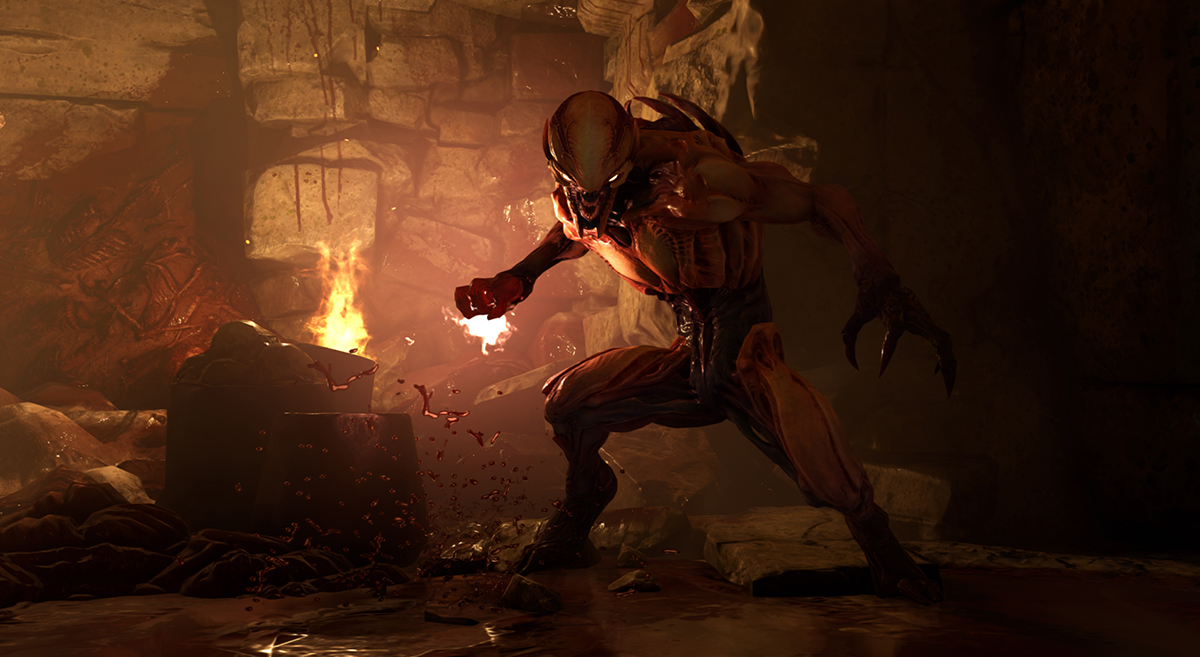
But it’s far more than an ancient game given new levels and shinier, sharper graphics: id has implemented a bunch of changes that bring Doom into line with today’s shooters.
Weapons, armour and your character can be modified and upgraded to better deal with the increase in enemy difficulty, and completing a host of level-specific challenges (stuff along the lines of “find three secrets” or “kill five Imps with mid-air attacks”) help speed up this progression.
Occasionally, you’ll also come across timed challenge areas that set you a tricky weapon-specific task in a separate arena, rewarding you with runes should you manage to pull it off. These runes, while equipped, give you a permanent ability boost, such as increasing the amount of control you have over your mid-air movement.
Finally, the gameplay has been tweaked to add more involvement to combat. Take Glory Kills, for instance – gore-drenched executions that can be pulled off when close to stunned enemies.
A Glory Killed enemy will drop more health for you to collect, which incentivises you to use this ability when flagging. The chainsaw update works in a similar resource-boosting way – it’s an insta-kill melee weapon with a limited number of uses, but anything you kill with it will drop tons of ammo.
ONE HELL OF A CAMPAIGN
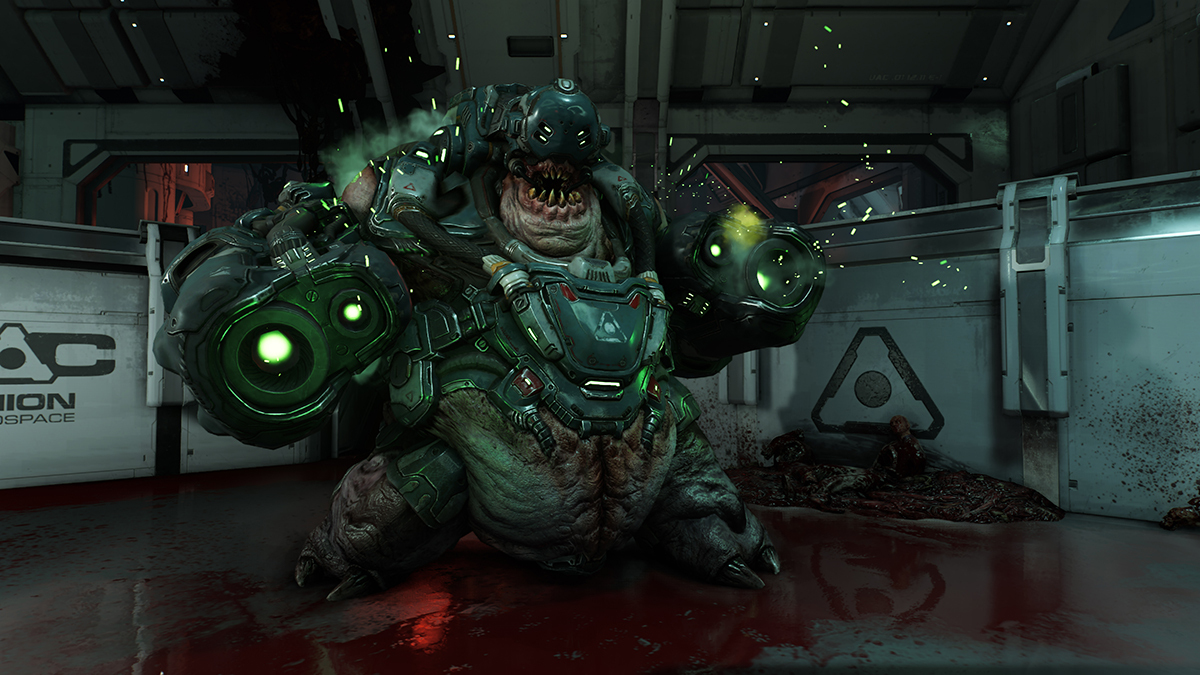
These innovations add tons of variety and dynamism to combat, preventing Doom becoming the backward-looking shooter it could so easily have been. It means that, when you play through an area you’ve already beaten (perhaps seeking out those elusive secrets), you’ll be fighting the same enemies in a different way every time.
All in all, Doom‘s single-player feels like a job well done for id. At about 12 hours, it’s longer than many triple-A shooter campaigns and, while its story isn’t particularly intriguing, its environments, level design and the promise of challenges and secret areas ensure you’ll be entertained for that whole time – and most likely beyond.
Which is good, because if you were relying on the multiplayer to keep you coming back, you might be disappointed.
MIDDLING MULTIPLAYER
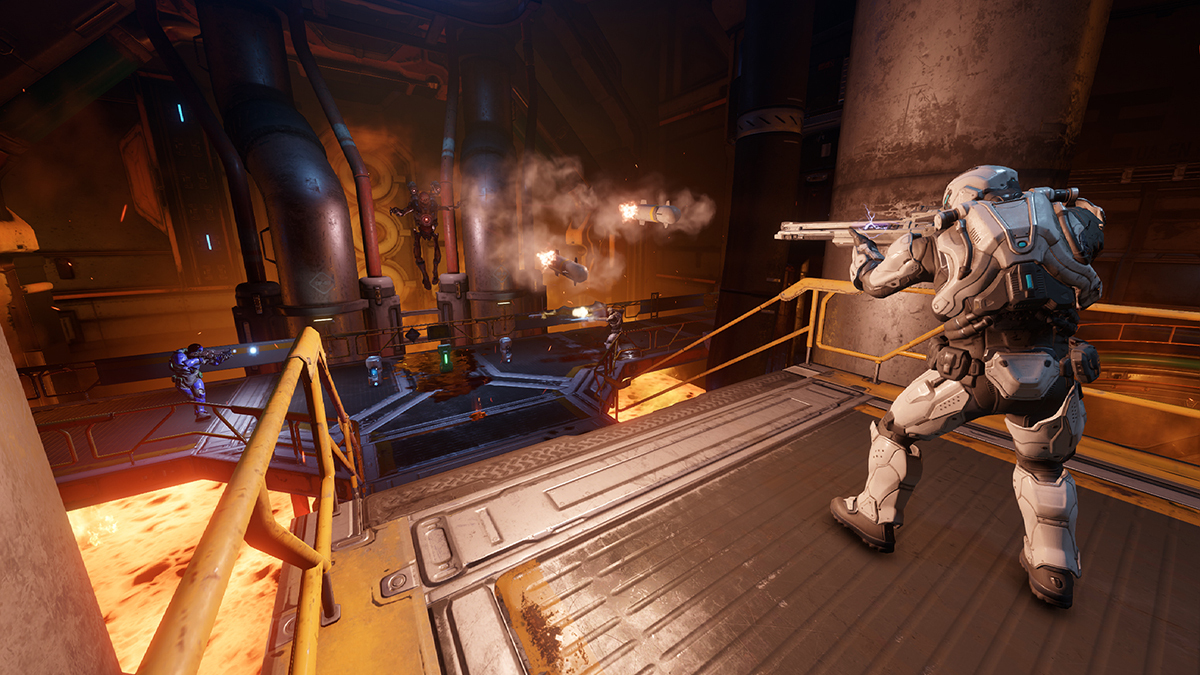
Now, I don’t want to be too harsh on Doom‘s multiplayer mode, having not spent nearly as long testing it as I did playing the campaign, but my early experiences suggest that it lacks the polish and the feel to keep players’ attentions for long.
Weapons feel like peashooters, there’s little sense of teamwork and the reliance on loadouts and experience-based progression makes this a Call of Duty-esque multiplayer without the polish. Surely a Quake-style arena multiplayer, with players having to grab weapons and power-ups from the levels, would suit Doom more? It seems especially odd given that there aren’t many of them around, particularly on consoles.
Doom‘s multiplayer was developed by a different team to its single-player campaign, and there’s a real sense of disconnect between the two. The multiplayer hasn’t exactly proven to be a hit with players so far.
MAP’S THE WAY TO DO IT
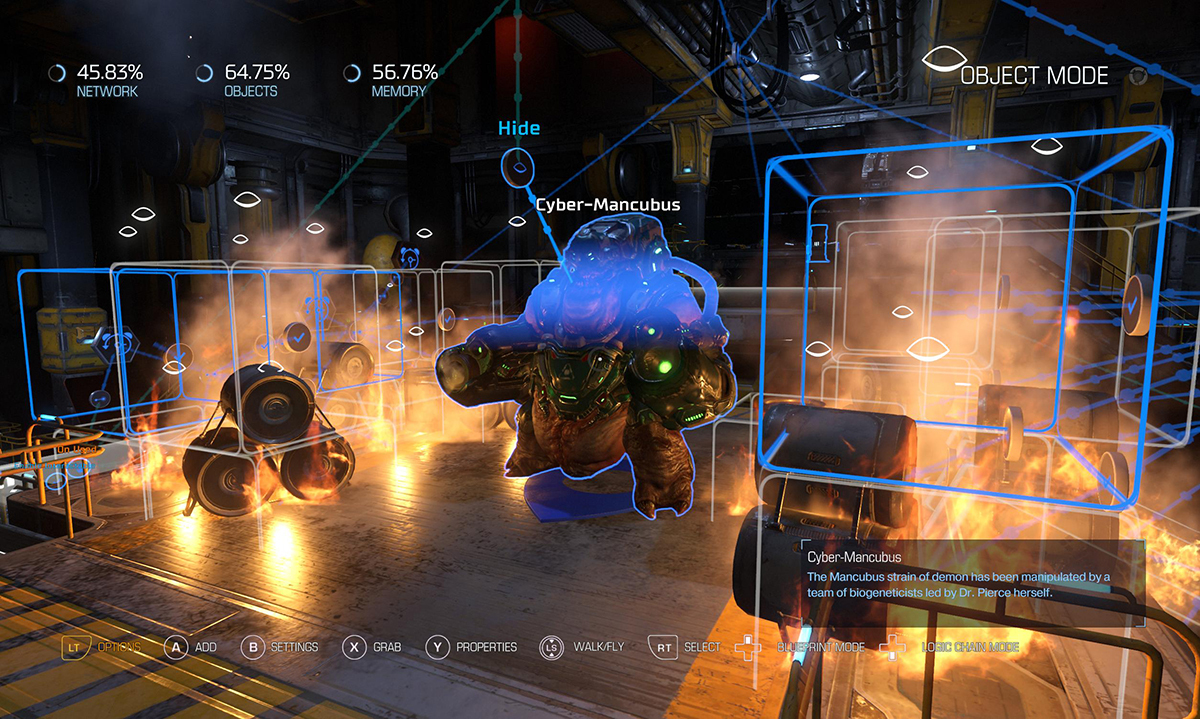
One last thing that needs mentioning is SnapMap, a level editor included in all editions of the game. SnapMap gives you the tools to create single-player, co-op and competitive maps, placing rooms, enemies, objects, objectives and triggers from a huge library.
SnapMap is deceptively easy to use, and within an hour or so of picking it up, you should be able to create simple maps. These maps can then be shared with friends or via the Doom community – even across platforms. So you can create a level on PC and all your Xbox One- and PS4-owning mates will be able to try it.
Like the multiplayer, a lot of SnapMap’s success will depend on the degree to which it’s adopted by the community, but the toolset is both wide and robust, so I can’t fault id for its efforts here and I’m fairly confident that, by the time you read this, there’ll already be a bunch of crazy/fun/silly/bizarre maps to muck around with when you feel like a break from the campaign.
SWITCH IT UP

Doom on a Nintendo console – it’s been done before, but wasn’t exactly pretty: the SNES version of the 1993 original ran with a shocking frame rate, and didn’t have enough memory to show enemies from any angle other than face-on. So when Bethesda announced it would be bringing the 2016 remake to the Switch, fans held their collective breath.
Amazingly, though, the devs have done it. Doom on the Nintendo Switch is Doom. End of story.
Sure, the resolution has dipped, the frame rate has been dropped to 30fps and textures simplified, but the entire campaign is here – in all its BFG-blasting, no-health-regenerating, ultra-violent melee killing glory. Multiplayer and arcade mode even make the cut, and although the player-created SnapMap is MIA, it’s not a major loss.
The lower frame rate doesn’t detract too much from the ultra-smooth gameplay, and liberal amounts of motion blur manage to cover up most of the graphical limitations. If you’ve seen Doom running on the PC or the more powerful consoles, though, you’ll instantly notice the softer, more muddied presentation. Not that it’s a dealbreaker.
The controls are simple enough that they feel right at home with the Joycons in tablet mode, although the lightning-fast reflexes needed for Arcade mode will leave you yearning for the precision of Nintendo’s Pro Controller and its larger analogue sticks.
Doom is a dark game, too, best played with the curtains drawn and the lights down low. Playing with the Switch in its portable guise can make it a little tricky to see where you’re supposed to be going – even with the screen brightness cranked up to the max.
If you’ve somehow avoided Doom up to now, or were enough of a Nintendo die-hard to survive the drought of third party games on the Wii U, it is absolutely worth picking up on the Switch – although you’ll pay a premium for it. A year on from when it first showed up on PS4 and Xbox One, Sony and Microsoft fans can bag a copy for a tenner, but here it’ll set you back £40.
Doom verdict
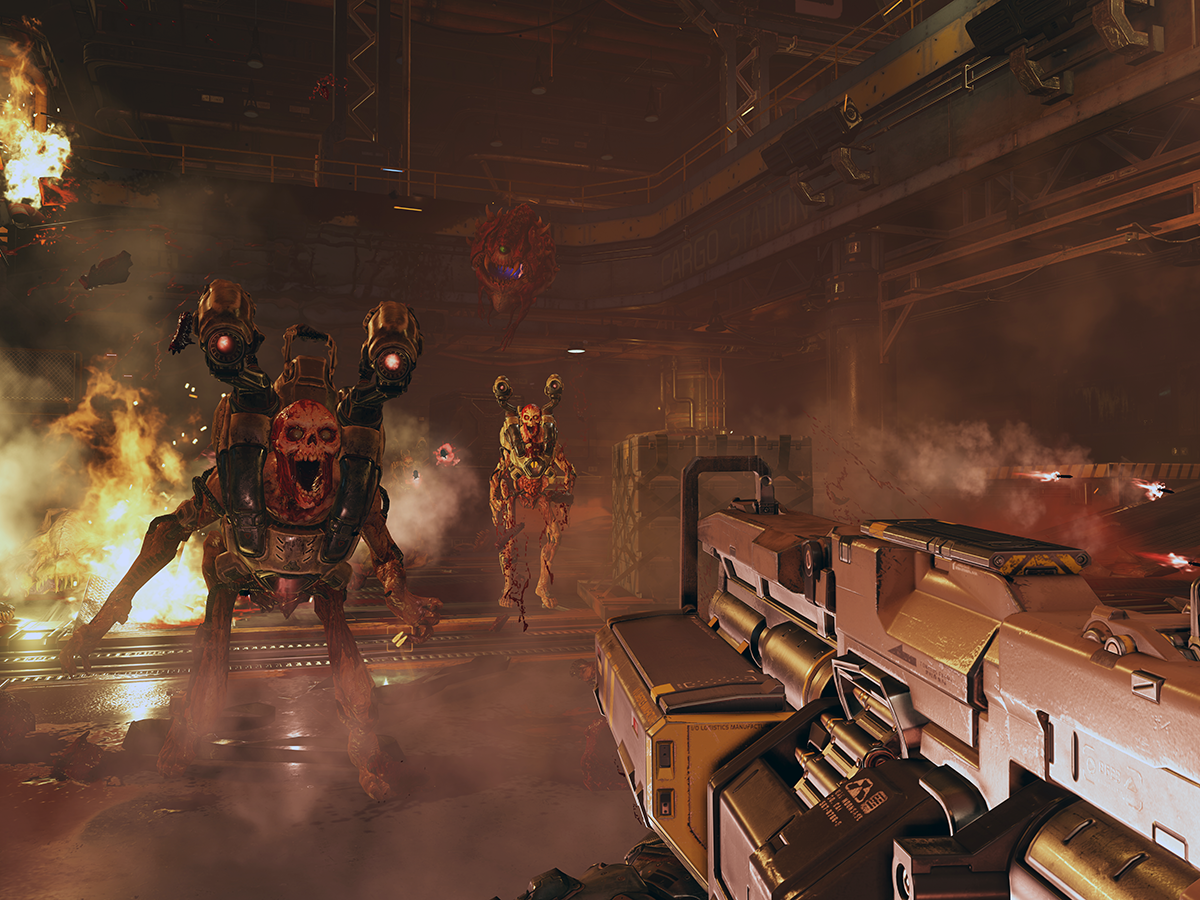
It could have been little more than an empty exercise in nostalgia for the thirtysomething crowd. Thankfully, Doom manages to blend in just enough 21st century tweaks to appeal to the kind of Modern Warfare-raised whippersnapper who thinks “shareware” is something you keep your picnic sandwiches in.
Is it an essential purchase? Not unless you’re a twitch shooter fanatic, or an old DOSer looking to relive your early FPS memories given a modern day sheen.
It’s an enjoyable shooter with a decent campaign and a turbo-charged but messy multiplayer mode, but one I suspect many will hold off buying until the price drops a little – and I wouldn’t blame them.
READ MORE › The 10 best console games in the world right now
Stuff Says…
Frenetic, blood-drenched and just a little bit modern – a worthy reimagining of the 90s classic
Good Stuff
Captures the spirit of the early Dooms
Campaign is packed with secrets
Potentially brilliant map editor
Bad Stuff
Underwhelming multiplayer
Barely-there plot


